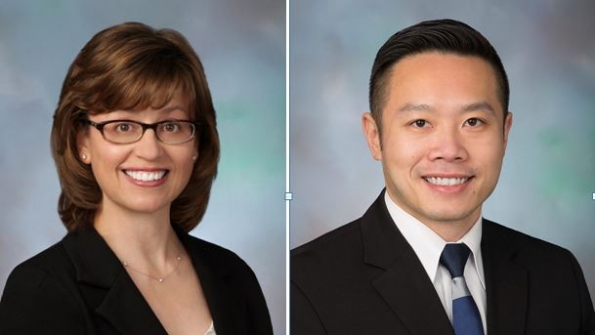Congressional hearing on FirstNet offers fresh insight into potential opportunities, challenges for commercial partners
What is in this article?
- Congressional hearing on FirstNet offers fresh insight into potential opportunities, challenges for commercial partners
- 2. The mandate for nationwide coverage translates into an emphasis on rural buildout. The Act requires FirstNet to establish a “nationwide” network for first responders through the development of RFPs that include “coverage in rural and nonurban areas.” However, the law does not otherwise specify the level of coverage that constitutes “rural.” In 2014, FirstNet published its first public notice (PN) proposing that the term “rural” should have the same meaning as “rural area” in the Rural Electrification Act (REA) of 1936, as amended, which would include cities, towns, or incorporated areas with fewer than 20,000 inhabitants that are not adjacent and contiguous to urbanized areas with more than 50,000 inhabitants. Several states have criticized this definition as inadequate to ensure ubiquitous state-wide coverage.
- Congressional hearing on FirstNet offers fresh insight into potential opportunities, challenges for commercial partners
Congressional hearing on FirstNet offers fresh insight into potential opportunities, challenges for commercial partners
By Shawn Chang and Anna Gomez, Wiley Rein LLP
Yesterday, the Senate Commerce Committee conducted its first oversight hearing of FirstNet since the entity’s creation by Congress three years ago. A product of the Middle Class Tax Relief and Job Creation Act of 2012 (Act), FirstNet is an independent authority housed within the National Telecommunications Information Administration (NTIA) and is charged with taking all actions necessary to build, deploy, and operate a nationwide interoperable broadband network for first responders. Following the record amount of revenue raised by the FCC’s recently concluded AWS-3 auction, FirstNet will be fully funded at its statutorily authorized level of $7 billion well before the end of the year.
The Commerce Committee hearing kicks off a busy period for FirstNet as it moves into high gear in the evaluation and development of the final comprehensive network request for proposal (RFP), which is targeted for release before the end of this year.
The testimonies of witnesses—FirstNet Chairwoman Sue Swenson Deputy Secretary of Commerce Bruce Andrews, Inspector General for the Commerce Department Todd Zinser, International Association of Fire Chiefs (IAFC) President and Chairman G. Keith Bryant, and Mark Goldstein from the Government Accountability Office (GAO)—and the thoughtful exchanges with committee members offered timely new insight into the direction of FirstNet as it begins to answer key questions on reliability, affordability, and sustainability.
Carriers, vendors, owners of network infrastructure as well as other entities that wish to partner with FirstNet should keep in mind some of the key opportunities and challenges about business opportunities with FirstNet that could be gleaned from the hearing.
Opportunities
1. Cost of network construction and recognition of public funding limitation indicate FirstNet’s plan to rely extensively on existing infrastructure. At the hearing, the GAO released a preliminary report showing the cost of network construction to be anywhere between $12 billion and $47 billion during the first decade. In his opening remarks, Committee Chairman John Thune (R-SD) stated that FirstNet must “work diligently to make itself a self-funding entity because, frankly, we are not in a budget environment that can easily tolerate spending more than the $7 billion in taxpayer dollars that has already been committed to the network.” Chairwoman Swenson later made clear that FirstNet is not seeking more taxpayer dollars to help fund the construction of the network.
Given the potentially significant gap between the amount of public funding available and the actual cost of the network construction, FirstNet likely will rely heavily on existing physical assets and network infrastructures owned by either public- or private-sector entities. However, Swenson stated during the hearing that one of the early-builder projects in Los Angeles demonstrated the difficulties of leveraging government-owned infrastructure at a local level, and FirstNet is no longer planning to require an inventory of public assets early on from states.
To control costs, FirstNet likely will need to partner with private owners of existing infrastructures—for example, antennae, cable, radio equipment, cell towers, backup power facilities, and backhaul providers—for the deployment of the network. In order to increase efficiency and reduce transaction costs, FirstNet probably will rely on the scale and cost-savings that could be offered by large companies or consortia comprised of multiple smaller entities.
Swenson repeatedly underscored FirstNet’s plan to rely on the value of its spectrum as a way to fund the network deployment as well as its maintenance and operation. She stressed the importance of getting the RFP issued, so FirstNet can validate commercial providers’ interest in partnering and entering into covered leasing agreements with FirstNet.
2. The mandate for nationwide coverage translates into an emphasis on rural buildout. The Act requires FirstNet to establish a “nationwide” network for first responders through the development of RFPs that include “coverage in rural and nonurban areas.” However, the law does not otherwise specify the level of coverage that constitutes “rural.” In 2014, FirstNet published its first public notice (PN) proposing that the term “rural” should have the same meaning as “rural area” in the Rural Electrification Act (REA) of 1936, as amended, which would include cities, towns, or incorporated areas with fewer than 20,000 inhabitants that are not adjacent and contiguous to urbanized areas with more than 50,000 inhabitants. Several states have criticized this definition as inadequate to ensure ubiquitous state-wide coverage.
In response to several questions from senators representing rural states, Swenson stressed the importance of rural coverage to FirstNet’s mandate, describing FirstNet’s rural coverage as a significant basis for differentiation from commercial broadband services.
Given that the second public notice (2nd PN) released by FirstNet on Monday seeks to ensure that revenues in “opt-out” states are reinvested in the overall network to supplement the cost of deployment and operation in states that are sparsely populated, FirstNet will likely have to engage in some greenfield network construction in areas deemed uneconomic to serve by commercial carriers. To reduce costs, FirstNet could also seek to partner with rural entities, such as electric utilities with existing infrastructure that could be leveraged for the broadband network.










